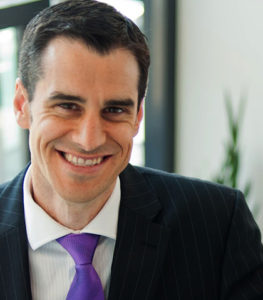Australia’s wealth gap growing
The gap between rich and poor in Australia is widening with the traditional middle class rump of the population starting to disappear, new research shows.
A report by social researchers McCrindle found the top 20 per cent of households now have earnings 12 times higher than those of the bottom 20 per cent.
On average, their wealth is 71 times greater – at $2.5 million compared with just $35,000.
“While the average household annually earns just over $107,000, the top fifth earns more than twice this exceeding $260,000 while the bottom fifth takes home around one-fifth of this – a little over $22,000,” McCrindle said.
“This means that while the bottom fifth of households get 4 per cent of all income, the top fifth get almost half of all earnings (49 per cent).”

Mark McCrindle
The highest earners also had highest income growth, the report said.
In the decade since 2005-06, most of the household categories have seen income increases of 18-19 per cent with an average increase of 24 per cent.
That is reflected as a $20,956 increase from $86,320 to the current $107,276 while the highest quintile has enjoyed income increases of 30 per cent – reflected as $60,528 higher than a decade ago, up from $199,576 to $260,104.
Newly arrived migrant and refugee families are much more likely to be in lower income and wealth groups, the researchers said.
Meanwhile, another survey has charted how the wealth of Australian families is changing over time.
It found the spread of wealth across Australia has become more unequal largely because of rising property prices.
The federal government’s Survey of Income and Housing (SIH) found that, in real terms, the average equivalised disposable household income in 2013–14 was $998 per week, this increased from $964 per week in 2011–12. Equivalised income accounts for increased consumption needs as household size increases.
This has increased over the last decade from $746 per week in 2003–04. The median weekly equivalised disposable household income was $844 per week, similar to 2011–12 ($830 per week).
The average weekly equivalised disposable household income for high income households rose from $1,903 to $2,037 between 2011–12 and 2013–14.
The income share of high income households was 41 per cent in 2013–14, similar to 2011–12. For low income households, their average weekly equivalised income rose from $395 to $407 between 2011–12 and 2013–14.
The average net worth for all Australian households was $809,900 in 2013–14, remaining relatively stable compared with $764,500 in 2011–12.
The spread of wealth across Australia is more unequal than for income mainly due to home ownership rates.
This is partly because people build up wealth over their working life. Australia has a long history of home ownership in comparison to many other countries.
Two thirds of Australian households owned or partly owned their home in 2013–14. As a result, rising house prices also contributed to an increase in total average household wealth.
Average household wealth for those households who were renting was about 21 per cent ($183,000) of the average wealth of owner occupied households with a mortgage ($857,900) and 13 per cent of owner occupiers who owned their home outright ($1.4 million).
Average household wealth for low wealth households in 2013–14 was $35,600, for middle wealth households was $462,500 and for high wealth households was $2.5 million. There was little change in wealth in each of these groups between 2011–12 and 2013–14.
Over 70 per cent of households had some level of debt in 2013–14. Of these, 26 per cent were servicing a total debt that was three or more times their annualised disposable income. This increased from 24 per cent of households with this level of indebtedness in 2011–12.
These households are considered to be at higher risk of experiencing economic hardship if they were to experience a financial shock, such as a sudden reduction in their income or if interest rates were to rise.
Laurie Nowell
AMES Australia Senior Journalist












